
ISSUE 156 | PHYSICAL WELLNESS THE BENEFITS OF ICE BATHS PG 23 PG 54 COMPASSION IN PLASTIC SURGERY: AN INTERVIEW WITH DR. BRIAN PINSKY, MD, FACS

Wellness encompasses a healthy body, a sound mind, and a tranquil spirit. Enjoy the journey as you strive for wellness.
- LAURETTE GAGNON BEAULIEU

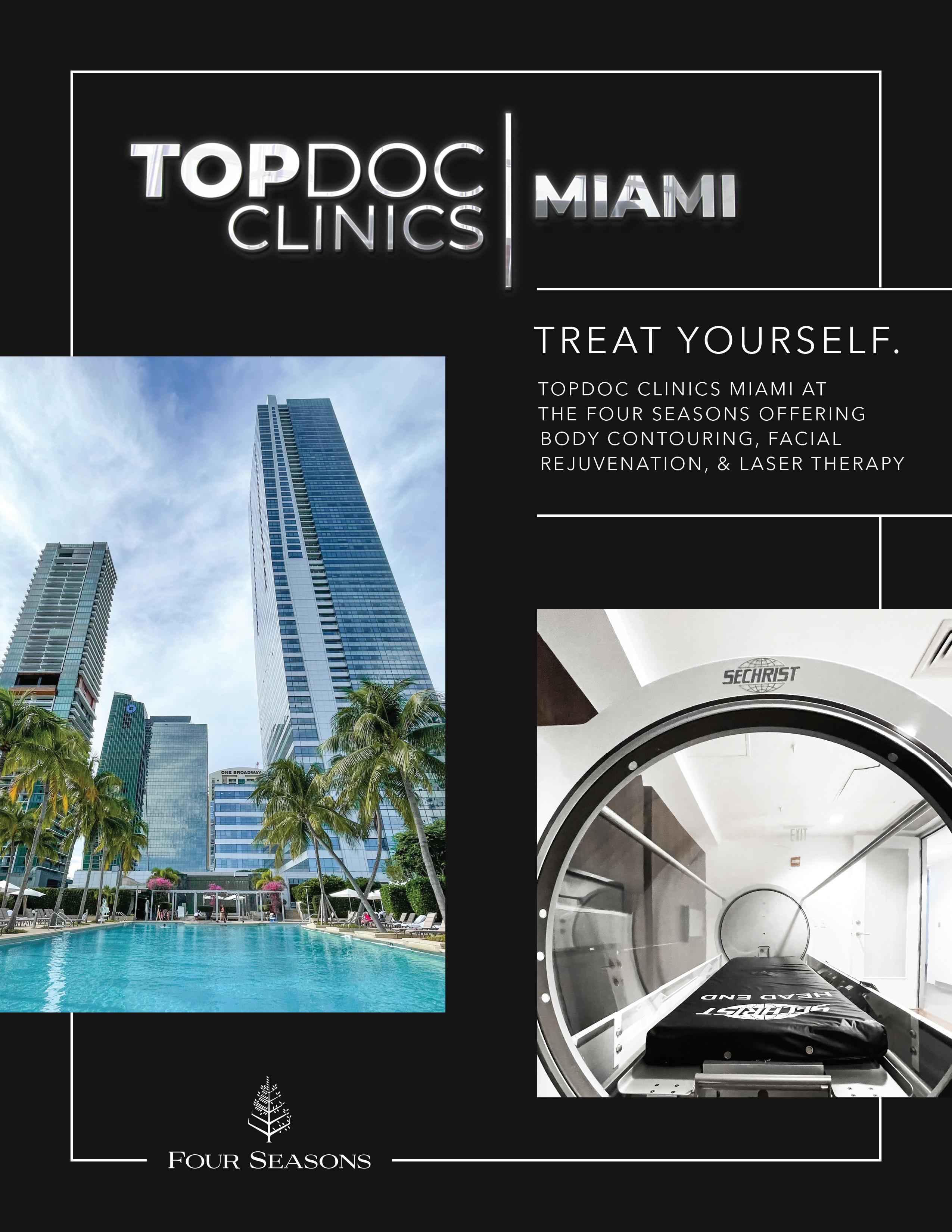
Suffer from acute or chronic wounds? Healing shouldn’t be painful.
Experience pain-free treatment through a saline mist that reduces and removes bacteria while promoting healing. UltraMIST is a non-contact, lowfrequency ultrasound that painlessly promotes healing when administered by any trained health care professional.
Learn
MICROVASCULAR TESTING SYSTEM



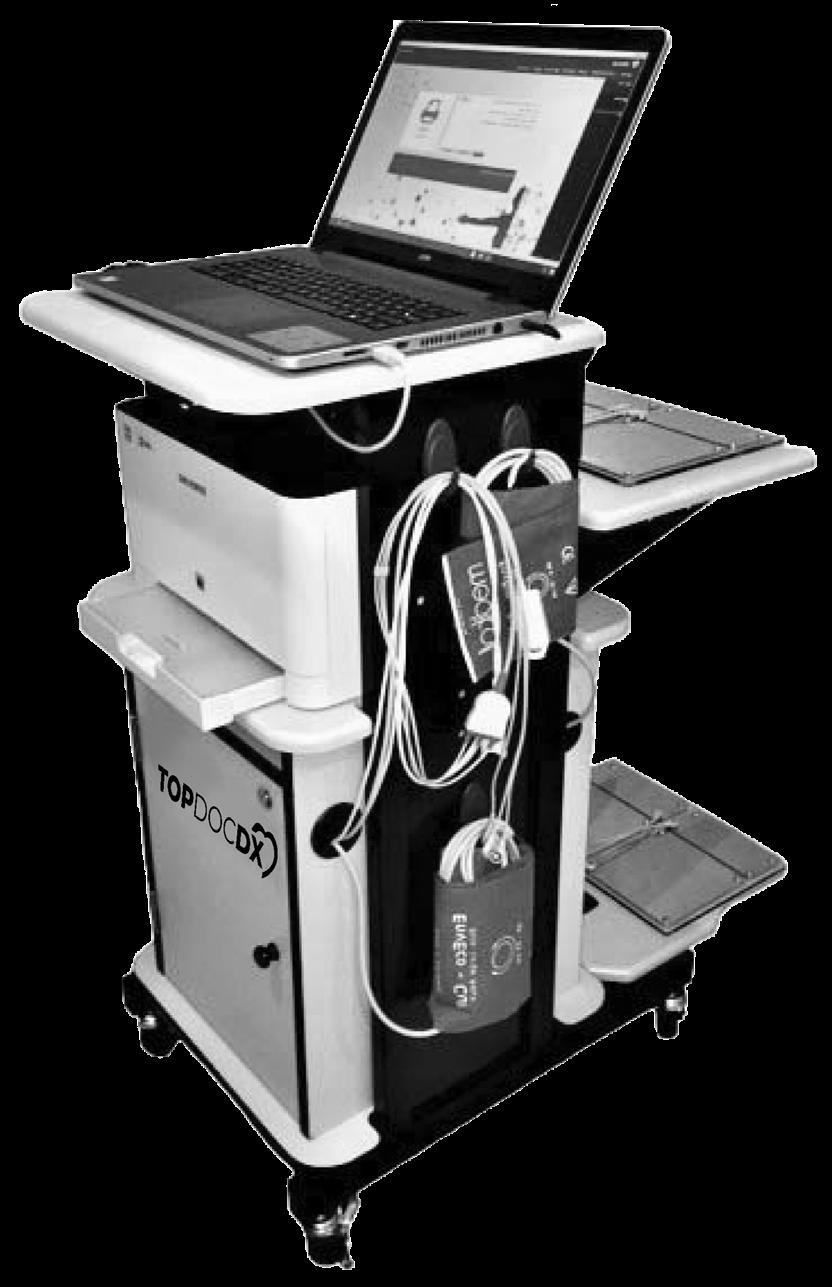

• Early Detection of Chronic Disease in Asymptomatic Patients
• Diagnose Complex Symptoms
• Increase Patient Compliance with Treatments

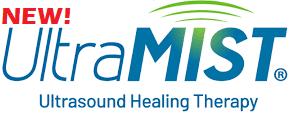



TopDocDX presents a real-life picture to the patient, with all its positive and negative influences. Therefore, physicians will have an enhanced understanding of the patient’s overall health. This clinically powerful and non-invasive testing system for hidden diseases in asymptomatic patients provides the patient with an inside-out look on their health.

15-MINUTE NONINVASIVE ON-SITE DIAGNOSTIC TESTS

Listen to the latest in health and wellness on Spotify today!
Learn more
more
TEAM CONTRIBUTORS EDITOR IN CHIEF Brianna Connors JUNIOR EDITOR Riley George CHIEF MARKETING OFFICER Hannah Townes MARKETING DIRECTOR Derek Archer SOCIAL MEDIA SPECIALIST Lauren Rider GRAPHIC DESIGNER Sarah Cook Ann Y., Drew B., Gaye Newton, Louisa Emhof, Luke Argue, Mălina O. R., Nathan Pipkin, Peter C.
Leading a healthy, well-balanced life is a challenging undertaking for many of us. New advancements in lifestyle or nutrition come to life daily, and the busy rhythm of our lives often prevents us from keeping up with what’s fun and fresh.
Here at Top Doctor Magazine, we are on a mission to bring these advancements to your attention and become a source of inspiration for those who want to live their lives to the fullest. Our contributors will constantly keep you up to speed with fresh, entertaining, and reliable content, from nutrition and travel to lifestyle choices!

We hope that our handpicked ideas will guide you towards self-realization, selfimprovement, and willingness to help those around you better themselves.

MEDICAL NEWS
Is Mental Healthcare Less Accessible to Marginalized Communities?
Genetics and Your Health
Where Vitamin A is FoundLIFESTYLE
Sound & Music Therapy

The Business of Dentistry: An Interview with Dr. Tarek Aly
What High Protein Foods Should I Add to My Diet?
Long-Term Effects of Tanning Beds
Compassion in Plastic Surgery: An Interview with Dr. Brian Pinsky, MD, FACS

A Green Mediterranean Diet May Positively Impact Your Health and the Planet

Benefits of Ice Baths
Perseverance and Perspective: An Interview with Dr. Amel Hassan, DDS, FICOI
SEXUAL
Is There Such a Thing As Having Too Much Sex?
50 08 24 12 34 64 23 40 60 44 54
WELLNESS
CONTENTS 08 23 40

64
Binaural Beats
WRITTEN BY PETER C.
Sound Music Therapy ave you ever thought about whether sounds or music could aid in healing your body?
HSound therapy is an effective and increasingly popular way to improve overall health and well-being. From sound baths to music therapy, there are many ways to use sound for its healing properties.
Sound therapy can reduce anxiety, improve sleep quality and manage pain when used to its full potential. As a result, hospitals and other healthcare settings are increasing their use of sound therapy to support patients during their recovery.
The history of sound and music therapy dates back thousands of years, when ancient cultures used music and sound for healing purposes. Today, sound therapy is regaining its pristine popularity as a complementary and alternative medicine (CAM) approach.

There are many different types of sound therapy, each with its unique benefits.
Binaural beats are your brain’s illusive perception of two different frequencies being played in each ear, thus creating a third frequency in the middle of the two. For example, if the left ear picks up a tone at 210 Hz and the right ear picks up a tone at 200 Hz, the binaural beat is 10 Hz, the difference between the two frequencies. The binaural pulse is an illusion created by your brain rather than an actual audible sound heard by your ears.
The pulsing tone perceived by your brain causes your brainwaves to synchronize with the tone’s frequency, an effect called brainwave entrainment. The effects of this therapy are still not fully understood, but decades of research have uncovered several benefits, such as stress relief, sleep disorder amelioration and focus improvements. Binaural beats are often used for meditation or relaxation, but they have also been found to help with insomnia, anxiety and PTSD. In addition, the 40 Hz or gamma wave binaural beat has been shown to promote focus and concentration alongside improvements in memory. Subjects were shown to have improvements after even just 3 minutes of exposure.
8

Top Doctor Magazine / Issue 143 / 9

10
A sound bath is a type of therapy that uses sound to heal the body, mind and soul. It’s a relaxing session where you lie down on your back and and other instruments for about an hour, typically Singing bowls for sound baths use vibrational made of metal or crystal, producing a resonant waves produced by the bowl can help the body
Sound baths are gaining popularity as a way relaxation and stress relief. A 2020 research review reiterated the positive effects but cautioned about the small number of studies on sound baths and therapy, which people use to help their bodies heal
than taking prescription drugs in reducing anxiety before surgery.
Music is also beneficial for those who are ill or recovering from surgery by reducing pain, anxiety and stress and promoting healthy recovery. A study from Brunel University in London has shown that music therapy can reduce both pain and anxiety in patients recovering from surgery.

Music therapy can be a salutary avenue for people struggling with addiction. Studies have shown that music therapy help reduce cravings and withdrawal symptoms in people trying to quit drugs or alcohol. Music therapy also helps people struggling with addiction by providing a positive outlet for emotions and helping them to cope with stress. It is the ideal channel for expressing feelings and achieving more profound levels of relaxation.
The benefits of music therapy break the barriers of age. Research has shown that singing is better for calming babies down than talking. Babies are more relaxed and engaged when they hear their parents sing rather than talk. Singing also helps them develop their language skills and their ability to understand music and rhythm.
A Parting Reminder
Music is beneficial for reducing stress, improving moods and helping people cope with anxiety and
If you’re looking for a natural way to reduce stress and promote healing, sound therapy may be right for you. And if you’re wondering where to start, there are plenty of binaural beats available on the Internet that might resonate with you. However, it is best to look for qualified, professional music therapists for sound baths and music therapy.
Top Doctor Magazine / Issue 143 / 11

12
Long-Term Effects of Tanning Beds
 WRITTEN BY M Ă LINA O. R.
WRITTEN BY M Ă LINA O. R.
Sometimes, achieving that most wanted look requires a visit to the tanning salon. And although the majority of people know the dangers of tanning, either indoors or outdoors, they still keep doing it. Therefore, people need to inform themselves and understand the dangers and long-term effects of tanning in tanning beds.
Top Doctor Magazine / Issue 143 / 13
Tanning Beds Health Risks

No type of tanning is safe or healthy. By getting tanned, your skin becomes damaged, which is when the risks associated with skin damage start to appear or increase.
The fact that tanning beds pose a substantial risk for your skin health has been known and public for a long time. It doesn’t matter the type of skin you have, your age or the intensity of the tan. Your skin still becomes damaged, and you are only putting yourself at significant risk.
#1: Are Tanning Beds Bad for Tattoos?
If you just got a tattoo or have one that is not fully healed, you have to stay away from tanning beds. Tanning a fresh tattoo can cause more damage and lengthen the tattoo’s healing process. Also, it can cause the color of the tattoo to fade away.
14
Cover the tattoo with a piece of material if you really can’t stay away from the tanning bed. You can also apply sunscreen over the tattoo for better coverage and protection.
#2: Will Tanning Beds Lighten Your Hair?
Indeed, a tanning bed will lighten your hair color. This happens because the lamps used to tan your skin emit artificial UV radiation. As this radiation darkens your skin color, it also lightens your hair.
The effects differ from one skin and hair type to another. While skin is made out of living tissue cells, hair is made out of dead tissue. As a result, UV radiation breaks the pigment in the hair, thus lightening its color.
#3: Why are Tanning Beds Worse Than Outdoor Tanning?
Tanning beds are considered more harmful than outdoor tanning. People tend to pick tanning beds over outdoor tanning because the time invested in the tanning process is much shorter, although the risks are more significant. No tanning type is healthy, although outdoor tanning brings fewer risks than tanning beds.
Tanning beds produce 100 times more UV radiation levels than outdoor tanning. The risks of tanning grow exponentially after a day on the beach, so the levels skyrocket when talking about tanning beds.
#4: Premature Aging
Since tanning damages skin cells, premature aging becomes more pronounced, especially over the face area. There are two primary UV rays used in tanning beds:
UVA has a longer wavelength and is associated with skin aging.
With its shorter wavelength, UVB is associated with skin burning and tanning.

The difference between the two is that UVB rays cause faster tanning while UVA needs more prolonged exposure to very high levels so that the results can show. Certain tanning beds use mainly UVA rays, which, unfortunately, infiltrate more profoundly into the skin and cause devastating effects on the skin cells, such as melanoma and other types of skin cancer. Also, because UV exposure causes your skin to dry up, you will become more susceptible to acne breakouts.
#5: Do Tanning Beds Cause Cancer?
Tanning beds increase the risks of developing skin cancer, including melanoma, basal cell carcinoma and squamous cell carcinoma.
You don’t need to be exposed to tanning beds for a long while for these risks to become hazardous. The damage appears even after the first tanning session. And with each session, the damage accumulates, so the damaged cells grow out of control. You may also be putting yourself at risk of developing ocular melanoma, cataracts and other diseases that may leave you blind.
If you find that your family has a history of skin cancer, the risks may be higher for you. Many cases of melanoma, which is the most dangerous type of skin cancer, are linked to regular tanning, especially in tanning beds.
Top Doctor Magazine / Issue 143 / 15
Myths about Tanning Beds
There are numerous myths regarding tanning beds. One of the most popular is that tanning beds will whiten your teeth, which is entirely false. You may get this impression because your teeth appear whiter as your skin becomes darker. Yet, this is only an illusion.
Another popular myth is that indoor tanning is safer than outdoor tanning. But the reality is quite the opposite. Tanning beds use much higher UV lights that penetrate your skin and add to the damage with every use. As a result, tanning beds are more dangerous than sun tanning.
These myths have appeared only to give bed tanning a better reputation and an excuse to use. But never underestimate the scientist’s words and research. Any type of tanning is dangerous, mainly indoor tanning.
You can always pick a healthier alternative, such as spray tanning. Spray tanning does not expose you to dangerous rays such as UV and will instantly give you a look and glow of your choice!

A Parting Reminder
Tanning beds are hazardous to your health, so don’t let anyone change your belief. Premature aging and various skin diseases are a very high price to pay for such a small thing. Remember, a natural tan is always the healthiest choice if you want your skin to be one with the summer!
16




Richard MacDonald has spent more than 50 years creating pieces that capture the beauty of the human spirit in motion. With inspiration brought to life using live models from celebrated brands such as the Royal Ballet, Olympic Games, US Open and Cirque du Soleil, Richard MacDonald is part of an enduring legacy that brings bronze sculpture into the 21st century. Contact: Myrna Soderquist msoderquist@richardmacdonald.com 702.217.2380 RICHARD MACDONALD SCULPTOR FINE ART GALLERIES LAS VEGAS Bellagio “O” Theatre 702.230.3990 CARMEL Lincoln & Sixth 702.230.3990 LAGUNA BEACH 326 Glenneyre Street 888.972.5528 PALM DESERT 73199 El Paseo Ste H 760.303.4300 the art of richard macdonald richardmacdonald.com Duality, Third Life, Column, Red, Bronze Scan QR to view Duality Column Red Top Doctor Magazine / Issue 143 / 17
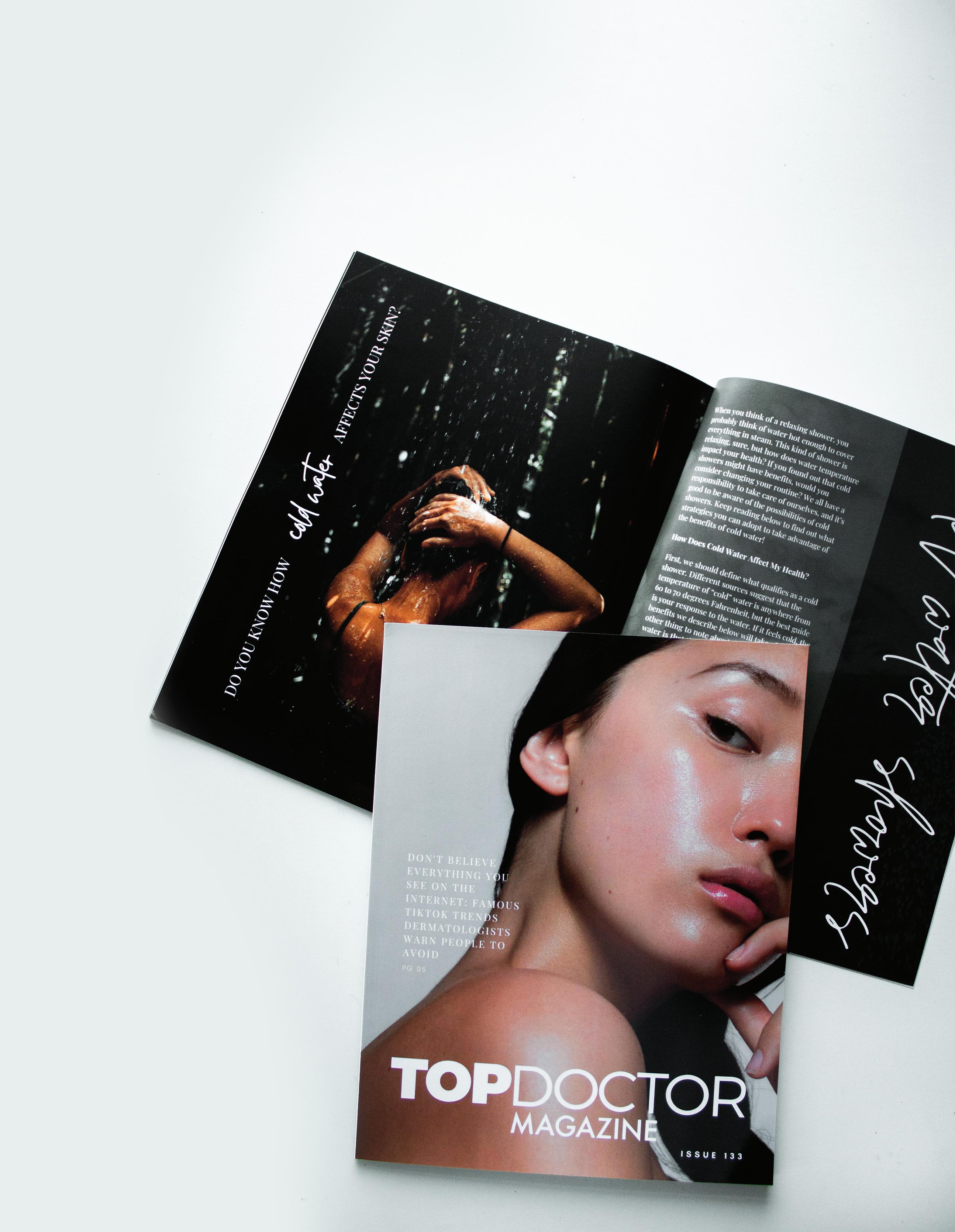



18
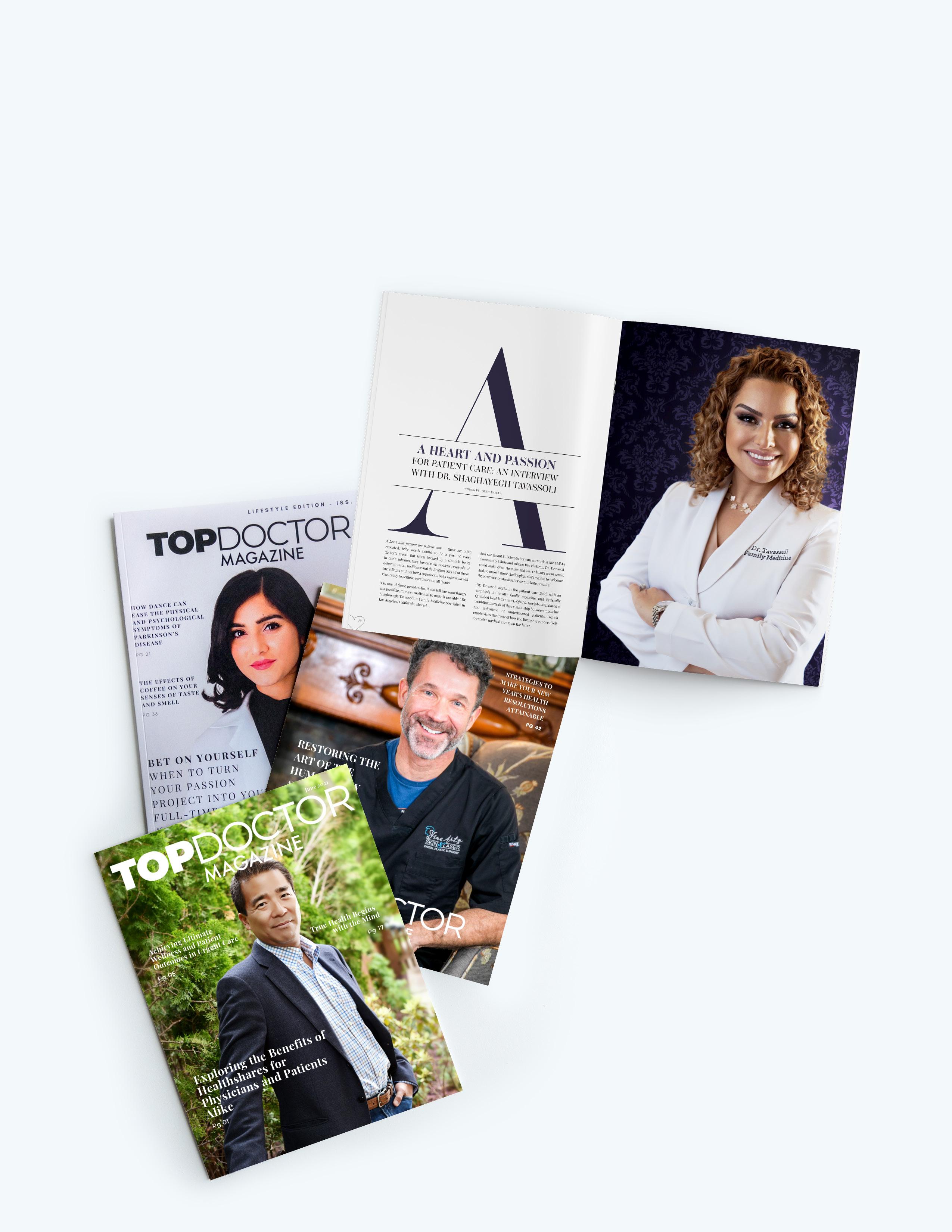

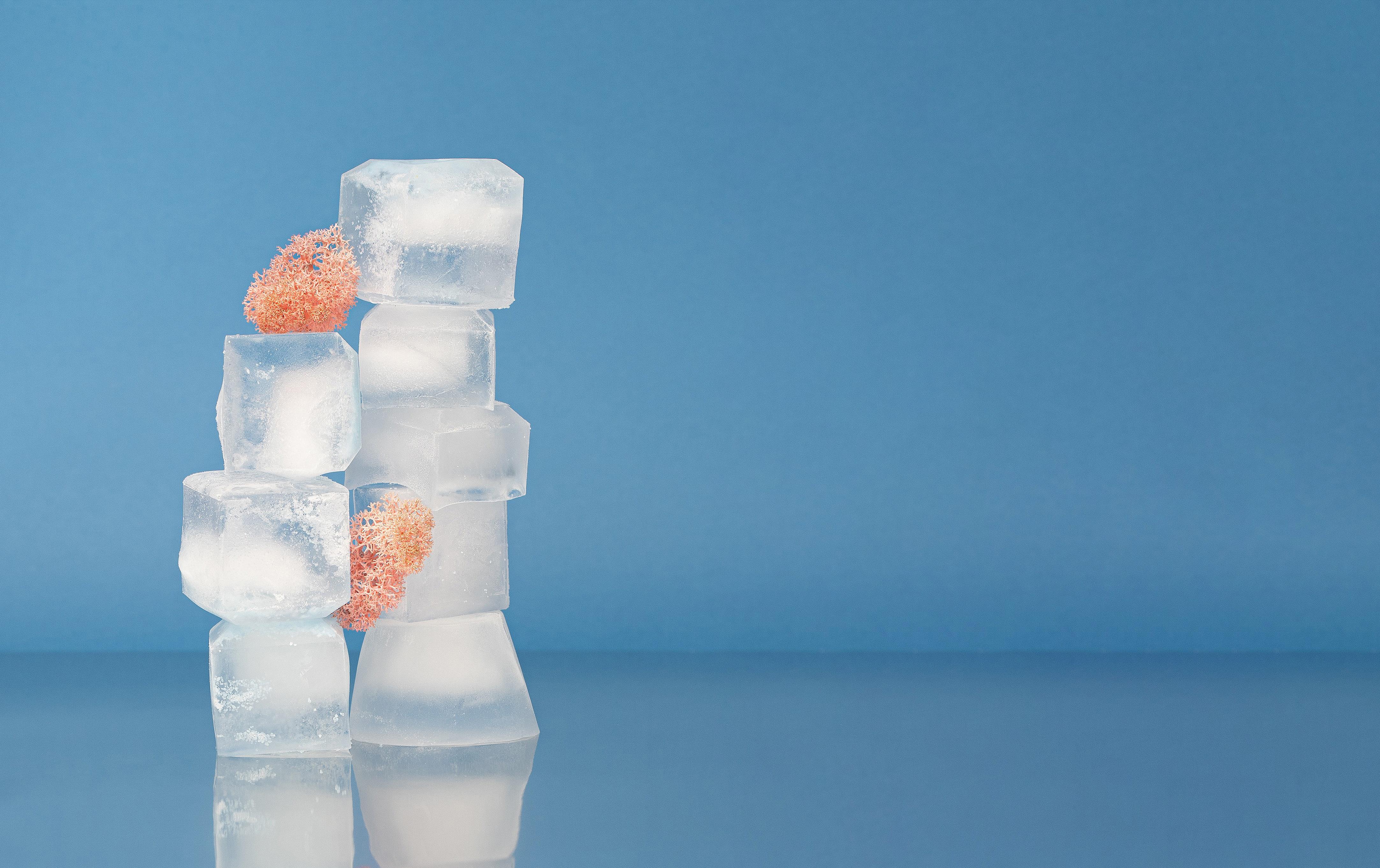
20
THE BENEFITS OF ICE BATHS
WRITTEN BY M Ă LINA O. R.
Ice baths, also known as cold-water immersion, have become quite popular among athletes and fitness enthusiasts. You may have watched videos of athletes submerging into massive tubs or barrels filled to the brim with ice-cold water. It may seem odd or even unbearable for you, but ice baths bring many health benefits, especially after intense workouts, and they’re not just for professional athletes!
ICE BATHS AND THEIR HEALTH BENEFITS
Ice baths represent the practice of entering a tub filled with freezing water (i.e., 50-59 F) for about 10 to 15 minutes. Usually, such baths are taken after intense exercise sessions or sports competitions that require the overwork of the muscles. They are believed to reduce muscle pain and soreness, commonly occurring after consuming workouts.
ICE BATHS MAY BOOST THE IMMUNE SYSTEM

One study indicated that ice baths, combined with meditation and different breathing techniques, may strengthen the immune system. The study participants, who were all exposed to bacterial infections, showed fewer symptoms after experiencing an ice bath. Although the researchers note that deep breathing played a significant role in the experiment, the technique only worked if paired with ice baths or cold exposure.
ICE BATHS DIMINISH MUSCLE SORENESS
Another study showed that ice baths are the perfect combatant against muscle soreness by reducing inflammation in just 15 minutes! The participants were asked to rest in water at fifty
Top Doctor Magazine / Issue 143 / 21

22
degrees Fahrenheit for 10 to 15 minutes. Researchers concluded that the practice reduces muscle soreness more effectively than just waiting it out.
ICE BATHS IMPROVE RECOVERY FROM INTENSE TRAINING
For athletes, ice baths are nothing out of the ordinary. Studies show that ice baths can boost the recovery of different injuries resulting from high-intensity training. Athletes like boxers and MMA fighters benefit most from ice baths, reporting less soreness and inflammation after injuries, training and intense competitions.
Not only do athletes benefit from improved recovery, but also gym members. If you are sore after an intense workout, try taking an ice bath. You will experience its benefits in no time!
ICE BATHS CAN REDUCE CARDIAC STRESS
Cardiac stress, a part of every athlete’s life, increases exponentially if the environment is scorching hot because the athletes already overheat during training. Ice baths can ease your cardiac stress after training or competitions, especially in the heat, as studies show that ice baths reduce participants’ heart rate after long training sessions.
IMPROVE RECOVERY FROM CARDIO
One study showed that after a 20 minutes session of intense cardio, athletes recovered faster if they took an ice bath in the 15-minute break between sessions. In addition, the study compared results from athletes that took ice baths and those that didn’t. Not only did the athletes perform better after the ice baths, but they recovered faster from exhaustion.
ANSWERING QUESTIONS ABOUT ICE BATHS
It is natural to have questions before starting any practice, and it’s no different for ice baths. Many people online are looking to solve questions such as:
DO ICE BATHS HELP SUNBURNS?
Ice baths can indeed help heal sunburns. This is because the cool water used in ice baths helps decrease the inflammation caused by a sunburn. Some people do not want to take anti-inflammatory medicine, and for them, ice baths are an excellent solution! Not only will ice baths encourage the process of healing, but they will also keep you cool and fresh!
CAN ICE BATHS HELP LOSE WEIGHT?
Practicing ice baths can activate the brown adipose, primarily located around your neck and collar bones. When activated, it releases different hormones responsible for burning the fats that gather around your waist and thighs, and, as a result, it can help you lose weight.
HOW TO PREPARE YOUR ICE BATH
There are a few requirements to remember before preparing your ice bath, starting with the temperature, which must be around 50-59 F or 10-15 C. Also, keep an eye on the time spent in the ice bath, as spending too much time in an ice bath can have adverse consequences. You should not spend more than 10-15 minutes in an ice bath. Finally, before entering the ice bath, you must make yourself comfortable with the water. Begin with your feet, then legs, chest, and so on.
A PARTING REMINDER
Keep in mind that an ice bath may not be for everyone. Many studies point out that the benefits are more valuable for athletes than the general population. If you want to use ice baths to recover from athletic injuries or intense training sessions, always look out for the temperature of the water and the time spent in it.
Top Doctor Magazine / Issue 143 / 23
WRITTEN BY LUKE ARGUE

IS MENTAL HEALTHCARE LESS ACCESSIBLE TO MARGINALIZED COMMUNITIES?
24
Mental health is increasingly becoming a fundamental element of healthcare for all. But accessibility is a challenge the healthcare community is struggling to resolve. While some groups can take advantage of mental healthcare, marginalized communities have less access to it, thus worsening outcomes for those who have mental illnesses. Due to a lack of accessibility, Hispanic or black Americans who live in historically marginalized communities cannot treat their mental illnesses as other Americans.
HOW MENTAL HEALTH AFFECTS THE MARGINALIZED
All of the benefits of napping are dependent on only spending between 30 and 90 minutes sleeping. Sleeping for more than an hour and a half puts you in a deeper part of your sleep cycle, making it more challenging to wake up feeling refreshed. In addition, longer naps can produce sleep inertia, making you feel more drowsy when you get up.
Naps over 90 minutes can have the opposite effect of shorter naps. While brief naps have been shown to improve brain function, longer naps can create. Unsurprisingly, mental health affects marginalized communities as well as those who aren’t marginalized. But those mental health illnesses are usually less common but more severe in historically marginalized communities. For black and Hispanic Americans, this means that they are less likely to suffer from depression than white Americans, but when they do, it is worse. Such severe mental illnesses are highly debilitating and require treatment from professionals. Yet, despite the unequal outcomes for those suffering from mental illnesses in marginalized communities, access to mental healthcare does not reflect this reality.
THE BARRIERS TO MENTAL HEALTHCARE FOR THE MARGINALIZED

Mental healthcare provision is uncommon for marginalized communities. Several factors contribute to this lack of access, but one of the largest is the lack of utilization by marginalized communities. In 2015, researchers found that 48% of white adults suffering from mental illnesses used mental healthcare while only 31% of black and Hispanic adults did the same. White Americans are more likely to receive treatment for their mental illnesses when compared to their black and Hispanic counterparts.
Additionally, men and women from marginalized communities can face stigma for their illnesses or even prejudice, reducing their access to mental healthcare. Like many suffering from mental illnesses, those from marginalized communities can experience the stigma and shame that often accompany mental illness. By being from a marginalized community, it’s possible for them to also suffer from racism, homophobia and other forms of bias that may reduce their access to healthcare.
Top Doctor Magazine / Issue 143 / 25
Such pressures vary from one marginalized community to another as pressures and stigmas can also be applied inside the community. For example, Asian Americans are less likely to engage in mental health services due to cultural pressure within their communities that considers the acknowledgment of mental illness taboo. Likewise, Middle Eastern Americans are more likely to receive stigma from other Americans but typically do not seek help from mental healthcare because they seek that assistance within their own families and communities.
The economic element can prevent equal access to healthcare for the marginalized as well. Unfortunately, there is an overlap between the socially marginalized communities in America and the lack of adequate health insurance coverage. As a result of less coverage, marginalized communities often have less access to what is often a costly service. This can be a significant barrier to preventing the marginalized from receiving needed assistance and care.
HOW THE HEALTHCARE INDUSTRY CAN REMOVE BARRIERS
The barriers to receiving adequate and equal access to mental healthcare for marginalized communities are significant. Therefore, the healthcare industry has to step up to the plate to make a dent in the wall that prevents care from being accessible to those who need it.
Luckily, there are several areas for improvement that the healthcare industry is quickly becoming aware of. According to a study from the National Library of Medicine, researchers recommend that providers combat these barriers by improving training and education, clinical infrastructure and developing multidisciplinary teams to understand, prepare for and combat barriers preventing accessibility for the marginalized. By implementing these changes, providers will help make mental healthcare more accessible for the marginalized and improve the quality of their care.
A PARTING REMINDER
Mental healthcare is much less accessible than it should be for marginalized communities. Luckily, these barriers are not insurmountable, as healthcare providers can effectively overcome them by instituting changes designed to improve accessibility. By doing so, providers will create a more equitable world with equal access to mental healthcare for individuals from all communities.
26

Top Doctor Magazine / Issue 143 / 27
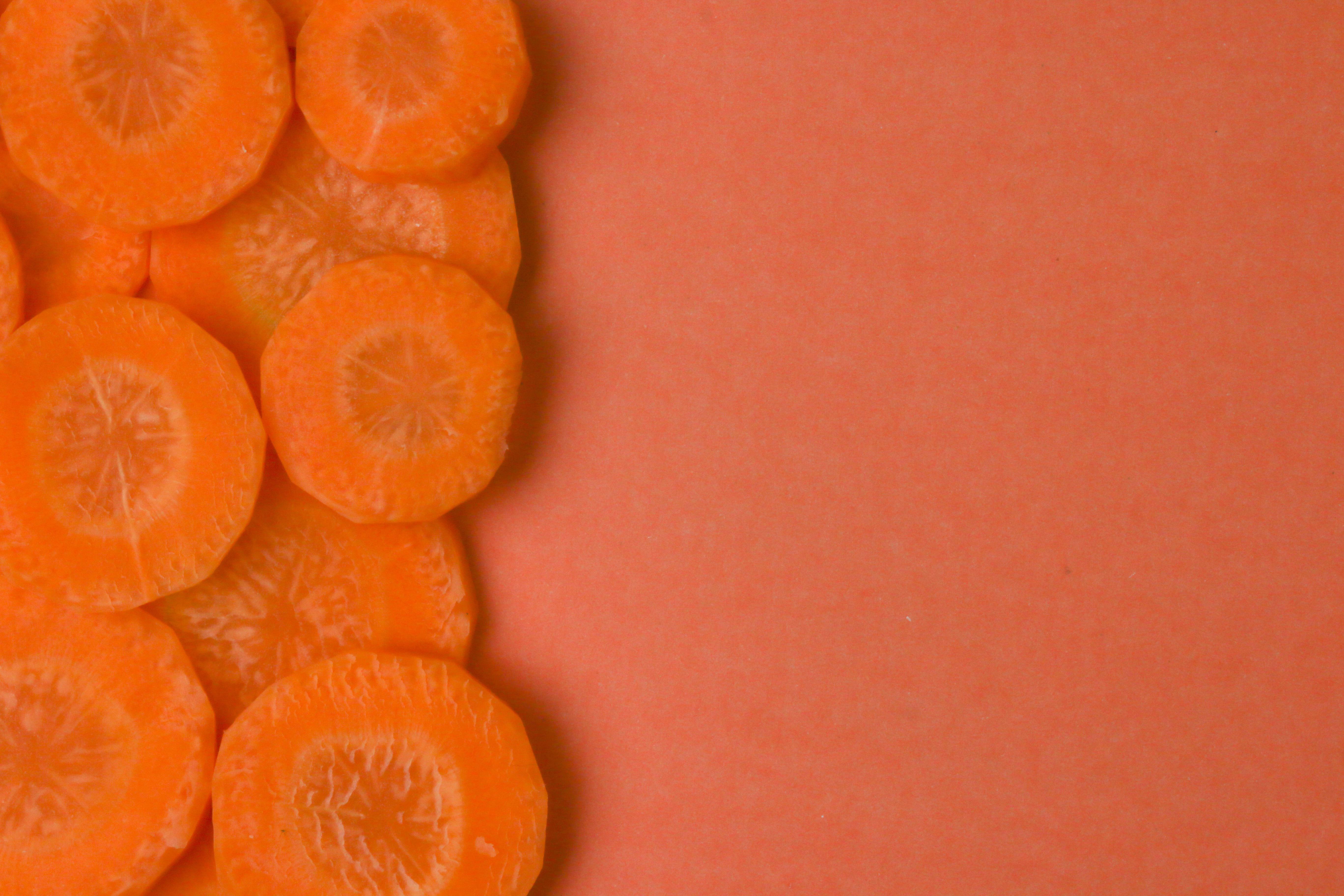
28
Where Vitamin AIs Found
WRITTEN BY NATHAN PIPKIN
The stunning array of vitamins, minerals and micronutrients that our bodies need to maintain our health can be intimidating. How should we even begin to learn about them? The best approach is to take them one topic at a time, learning how to improve your daily routine and lifestyle. It is entirely possible to achieve optimal health, it just takes some patience.
What Are the Two Types of Vitamin A?
The first thing to note is that there are actually two different kinds of vitamin A. One is called preformed vitamin A, and the other is termed provitamin A. The easiest way to remember the distinction between the two is to say that the former, preformed vitamin A, is found in animal products. Meat, fish, poultry and dairy are all ways to add preformed vitamin A to your diet. On the other hand, provitamin A can be found in plant-based foods. Fruits and vegetables are where you should look to find this second variety of vitamin A.

Top Doctor Magazine / Issue 143 / 29


30
With these serious consequences of vitamin A deficiency in mind, the natural question is: How can I avoid it? Asking how to add vitamin A to your diet is exactly the right question, and we’re going to dive into which foods will get you the most vitamin A for your buck. The best place to start is vegetables, as they are easy to find and typically less expensive than vitamin A-heavy proteins. The vegetables with the most vitamin A include kale, spinach, broccoli, carrots, sweet potatoes and pumpkin. The easiest way to remember these groups is to think of
As for other vitamin A-heavy foods, it’s worth noting that cantaloupe and mango are the most helpful fruits. A large wedge of cantaloupe or a single mango can give you 20% of the recommended daily value of vitamin A.

Meats and other animal products can also provide a generous dose of vitamin A! Beef liver, for example, offers 713% of the daily value for vitamin A in a single slice. A single hard-boiled egg will provide closer to 10% of the suggested daily intake, but this means that two eggs in the morning will get you 20% of the way there - it adds up over time! These dietary options are an excellent way to acquire the vitamin A that your body needs, but circumstances will occasionally prevent us from creating the right diet to get the job done. When that happens, it’s time to consider taking a vitamin A supplement.
What Are the Best Vitamin A
When choosing a supplement - any supplement, not just vitamin A - the first thing to know is that you shouldn’t exceed your recommended daily value unless you’ve cleared it with your doctor. The daily value of vitamin A for men is 900 micrograms per day, while women should consume 700 micrograms. If a supplement will help you reach that goal, then go for it! One of the most popular vitamin A supplements is the Nature’s Way brand. These particular softgels contain 3,000 mcg per serving, so definitely discuss the potential benefits with your doctor

Top Doctor Magazine / Issue 143 / 31

32
A Parting Reminder
Whether it’s from a planned-out and well-balanced diet or a high-quality supplement, vitamin A is one of the most significant markers of good health that we can manage. If you or a loved one is dealing with the consequences of vitamin A deficiency, consider sharing this with them, doing more research and speaking with your doctor about using vitamin A to improve your health.

Top Doctor Magazine / Issue 143 / 33
What High Protein Foods Should I Add to My Diet?
BY DREW B.
The first thing that comes to mind when we talk about protein consumption is bodybuilders, as they constantly promote food supplements or drinks with high protein content to build muscles. But, contrary to popular belief, protein is not only good for building muscles.
Protein is made up of amino acids that the body needs to repair hair, skin, muscles and bones. In addition, certain proteins are necessary for the body to produce the needed hormones that help the organs

and cells communicate. That’s why it is important to add foods high in protein to your diet, as they are beneficial to your overall health.
What Is Protein?
Protein is an essential macronutrient for building muscle mass that, when digested, protein breaks down into essential amino acids. Enzymes are also made up of proteins that make the chemical reaction and the hemoglobin that carries the oxygen in our blood. They are essential as we need to consume them through diet since
34
our body cannot produce them. Protein is present in muscle, bones, hair and virtually every part of your body.
What Happens to Your Body When Experiencing a Protein Deficiency?
Our bodies cannot store protein, so we need to consume protein daily to avoid protein deficiency. A protein deficit can negatively affect the body in various ways, including muscle loss, fatigue and a weakened immune system. A lack of protein can also lead to hair

loss and slowed down healing.
People at a greater risk of protein deficiency are seniors aged 70 or above, who are having a hard time consuming meat products, and people who follow vegetarian or vegan diets and don’t consume animal products. In severe cases, a protein deficiency can cause edema or fluid retention. If you think you may be experiencing a protein deficit, it’s vital to see a doctor or registered dietitian for help.
Top Doctor Magazine / Issue 143 / 35
How Protein Benefits the Body
Protein is an essential nutrient that your body needs for proper function. It is especially beneficial for athletes and people trying to lose weight, as it can help burn fat and build muscle. It also assists the healing process when you get an injury.
What High-protein Foods Should I Add to My Diet?
1#1: Chicken
Chicken is a fantastic, easy-to-cook source of protein. It also contains several essential vitamins and minerals, including B vitamins and iron.
#2: Fish
Fish such as salmon, cod and tuna are a healthy source of protein and omega-3 fatty acids, with countless benefits for the brain. For example, healthy unsaturated fats can lower beta-amyloid blood levels that form damaging clumps in the brain.
3#3: Eggs
Eggs are a versatile and nutritious source of protein that’s easy to absorb. Eggs are packed with selenium and vitamins B12 and A, and they also contain essential nutrients like choline, which helps improve memory.

#4: Cottage Cheese
Cottage cheese is low in fat and calories but high in protein. It also contains various nutrients such as calcium, phosphorus, selenium and vitamin B12.
#5: Greek Yogurt
Greek yogurt is high in protein and calcium, both of which are important for maintaining brain health. Adding these high-protein foods to your diet can help protect against Alzheimer’s disease and keep your brain healthy.
5 2 4
36

Top Doctor Magazine / Issue 143 / 37
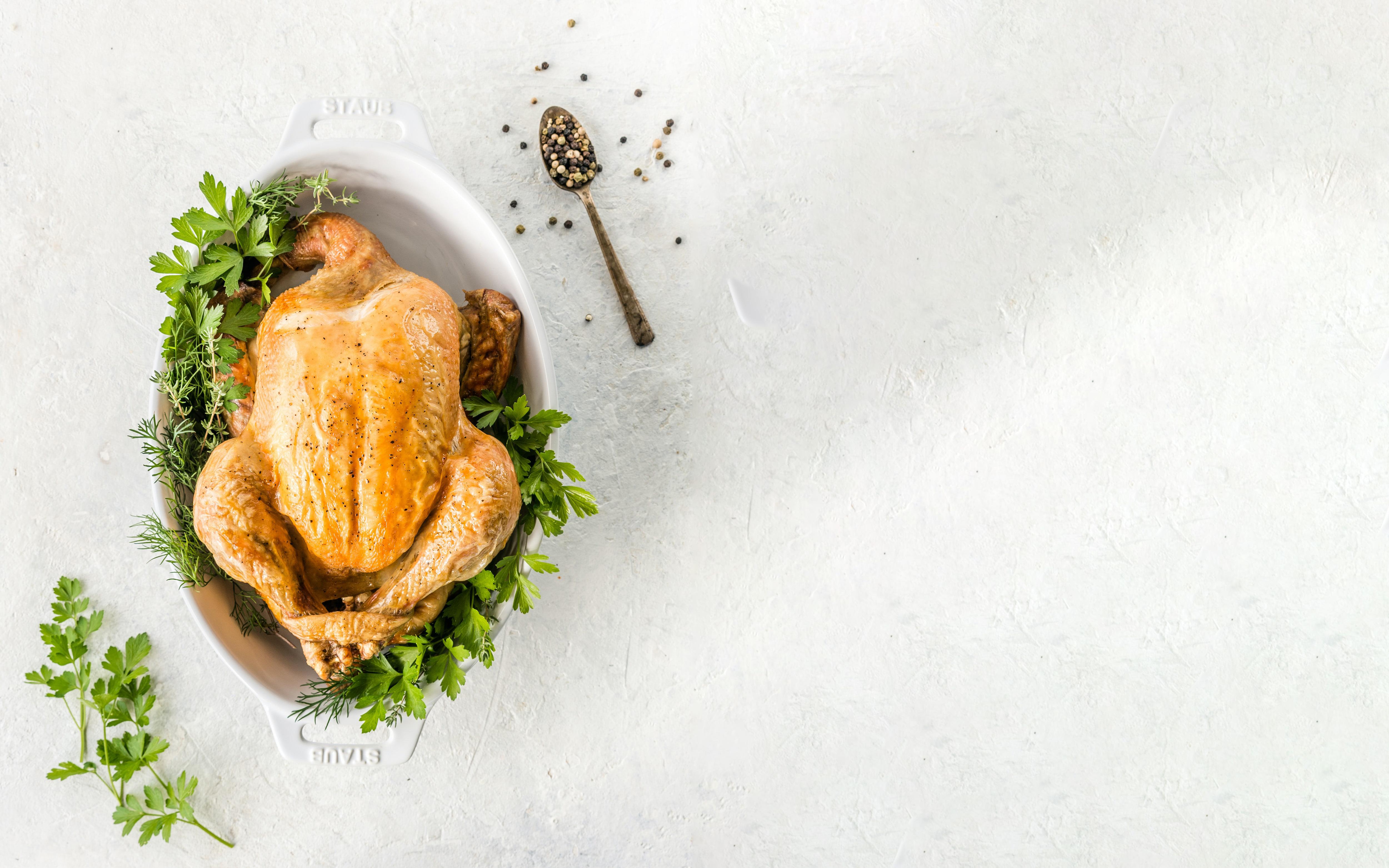
38
A Parting Reminder
Adding protein to your diet is a fantastic way to lose weight and live a healthy lifestyle. For optimal results, it’s best to consume a combination of lean animal protein and plant-based protein, coupled with a good amount of exercise to build the muscles. Anything in excess is bad for you, so avoid a very high protein diet if you don’t want to strain your kidneys. Instead, you can incorporate these high-protein foods into your current diet or contact your local dietician to develop the best diet plan for you.

Top Doctor Magazine / Issue 143 / 39
GREEN
MEDITERRANEAN DIET
May Positively Impact Your Health and the Planet
 WRITTEN BY PETER C.
WRITTEN BY PETER C.
The traditional Mediterranean diet is often lauded for its health benefits. But did you know that this way of eating can also be good for the planet?
A ‘green’ version of the Mediterranean diet— one that includes plenty of plant-based foods and fewer animal products—can help reduce greenhouse gas emissions while still providing all the health benefits associated with the Mediterranean diet.
So, what exactly is a green Mediterranean diet? Essentially, it is a more plant-based version of the traditional Mediterranean diet, which has been shown to protect against heart disease, cancer and other chronic diseases. The green version of this diet includes plenty of fruits, vegetables, whole grains, beans and nuts.
THE HEALTH BENEFITS OF A GREEN MEDITERRANEAN DIET
The health benefits of the Mediterranean diet are well-established. This way of eating has been linked with a lower risk of heart disease, stroke, cancer and other chronic conditions.
Researchers found that people who followed a Mediterranean diet had a lower risk of dying from any cause over 12 years compared to those who didn’t follow this diet.
New studies suggest that a green version of the Mediterranean diet may offer even more health benefits, including cardiovascular health, gut health and protection from brain atrophy. The green Mediterranean version includes more vegetables, fruits, nuts and legumes while focusing less on meat and dairy.
A
40

Top Doctor Magazine / Issue 143 / 41

42
The health benefits of a green Mediterranean diet are supposedly linked to the high intake of polyphenols. These plant-based compounds have antioxidant and anti-inflammatory properties and have been linked with a lower risk of chronic diseases like heart disease and cancer.
In addition, following a green Mediterranean diet may also be good for the planet. Sustainable seafood options, for example, help preserve ocean resources, and eating locally grown produce reduces your carbon footprint.
FOODS IN A GREEN MEDITERRANEAN DIET
If you’re interested in trying a green Mediterranean diet, there are many delicious recipes to choose from. Start by incorporating more plant-based foods into your meals, such as plant-based foods rich in vegetables, fruits, whole grains and olive oil. The diet also includes nuts such as almonds, walnuts and hazelnuts.
Some of the best foods to incorporate into this diet are:
Fruits: apples, oranges, pears, peaches; Vegetables: broccoli, cauliflower;
Grains: brown rice;
Nuts: almonds;
Oils: olive oil.
ENVIRONMENTAL IMPACT OF A GREEN MEDITERRANEAN DIET
A growing body of research shows that what we eat can significantly impact climate change.
The traditional Mediterranean diet is
already considered environmentally friendly because it includes lots of locally grown fruits and vegetables and relies on olive oil as its primary source of fat. However, we could make this way of eating even more sustainable by including more plant-based foods and fewer animalbased products.
A green Mediterranean diet, in particular, is beneficial for both human health and the environment. There are several reasons why the Mediterranean diet is so beneficial for the environment. First, the diet is based on whole, unprocessed foods, typically grown locally, which reduces the need for long-distance transportation and greenhouse gas emissions. Second, the diet emphasizes plant-based foods with a lower carbon footprint than animal-based foods.
A Mediterranean diet is also relatively low in meat consumption compared to the standard western diet. This has a lower impact on the environment because meat production requires more resources than plants, and raising animals for food emits greenhouse gasses.
A PARTING REMINDER
The climate crisis is one of the most pressing issues of our time, and it’s essential to find ways to reduce our impact on the planet. One way to do this is by changing our diets. So, if you’re looking to improve your health and do your part for the planet, a green Mediterranean diet is a perfect place to start!
Top Doctor Magazine / Issue 143 / 43

44
Perseverance Perspective
&
An Interview with Dr. Amel Hassan, DDS, FICOI
For the past 8 years, Dr. Amel Hassan, DDS, FICOI, has practiced dentistry in Florida and Illinois. Her focus is restorative and cosmet ic dentistry, including full and partial mouth extractions as well as cosmetic procedures, prosthetics and implants. She often works with patients needing full mouth reconstruction.
Dr. Hassan finds joy in helping her patients understand their treatment options and make informed decisions, giving them an improved quality of life and restoring optimal health and comfort.
Dr. Hassan is the owner and manager of her dental practice, Affordable Dentures & Implants in Florida, and has a string of successful startup dental practices in her background.

More importantly, Dr. Hassan provides her patients with the highest quality, affordable care. She has a long list of notable career achievements. For example, she was #1 implant placing provider in her first six months, opening a Denovo (brand new) practice in an organization network of over 375 practices in different states.
She is a recipient of the prestigious 'Dr. Bernard E. Rudner' Memorial Award, which she earned for "superior performance in providing oral comprehensive care and administering a dental practice." She has memberships in the International Congress of Oral Implantologists, the Academy of General Dentistry and the Omicron Kappa Upsilon National Dental Honor Society.
And she had to complete dental school twice.
Top Doctor Magazine / Issue 143 / 45
Starting Over to Move Forward
"The first time I graduated from dental school was in 2004 back home in Sudan," she shared.
When Dr. Hassan came to the U.S. in 2007, her credentials were not recognized, and she could not be licensed to practice. She had no choice but to go back to dental school and do it all over again.
"That was not easy for me to take in and to accept," she said. "To be honest, it was a big struggle. But I said, yes, I'll do it again. I am not giving up on this. So I applied to the schools here. Dental schools here are very competitive."
Having graduated overseas, she had to go into an advanced placement program, which consisted of a challenging test. And there was also the challenge of moving to a new country.
"There was the culture shock — new culture, new language, new everything. It was depressing because you think you just graduated and you're ready to practice. But here we go, back to it again. It was shocking for me, but I did apply to dental schools," she explained.
Dr. Hassan had to take several exams, and she sometimes even questioned why she went into dentistry.
"I had to go through not fitting in and getting rejected from this or that school. But I finally got accepted at NYU, which is one of the best schools in the country," she shared.
A Silver Lining in Rejection
"I want to also give credit to the school that rejected me, Chicago Dental School," Dr. Hassan added.
This school sent Dr. Hassan what she calls "a very nice rejection letter," so named because they took the time to explain why they rejected her application.
"That's what I was looking for," she explained. "I took that rejection letter and twisted it around. I don't take things for granted. I always see the opportunity inside rejections and disappointments."
This rejection letter gave her the information she needed to create a specific plan to get back to practicing her profession. It said that she didn't have research experience, a master's degree, volunteer experience or a high enough TOEFL (Test of English as Foreign Language) score.
"So I took that list one by one. I volunteered with the American Red Cross. I joined Illinois University for a Master of Public Health degree to prove that I could integrate into the American educational system. I retook the TOEFL test and improved my score. And I worked as a dental assistant to stay around the dental field and show that I am willing to step down to go a step higher," she shared.
Dr. Hassan is grateful to both NYU and the school that rejected her.
"I am grateful even more to the one that let me down because that was an opportunity for me to grow. The struggle was necessary. You cannot grow or get a better version of yourself without going through a struggle," she explained.
46

Top Doctor Magazine / Issue 143 / 47
Juggling Everything and Succeeding
Accepted by NYU, Dr. Hassan persevered through more challenges, such as her family in another country, being a mother to a small child (and temporarily sending him to live overseas) and adjusting to life in New York City.

"My dream was to be a dentist in the U.S. It wasn't easy, but I did it. My next dream was to add implant skills. So, I left a job I loved to go where I could learn that," she shared.
Dr. Hassan achieved that dream and more.
"Sometimes we think our dream is too big. But I never settle. You reach the level that you set for yourself. And you grow and change the way you think about life and how you value things," she explained.
Now here she is with a successful practice in Florida.
"We were one of the top offices — always among the top five in revenue and production. And it was only me. As a solo practice owner, it was rewarding," she shared.
She's also a recent Harvard Medical School for Safety, Quality, Informatics & Leadership (SQIL) graduate. Joining Harvard was another dream that she was able to check on her list. Her first application was rejected in 2018, reapplied and was accepted in 2020.
Dr. Hassan also takes time to give back.
"The Implant Pathway, one of the nation's leading implant training centers, invited me to be a mentor. So now I'm not only giving back to my patients, but also to other doctors," she added.
The secret to her success is loving what she does.
"It's like making a living while you're doing your hobby," she concluded. "I'm really happy where I'm at right now. However, dreaming never ends, and achieving a dream draws the way to a new one."
From Dr. Hassan's view, by the time you've reached your destination, you have become a brand new, better person. And your journey shifts in the direction of pursuing the newest dream. It certainly worked for her.
48

Top Doctor Magazine / Issue 143 / 49

50
Genetics andyourhealth
Written by Louisa Emhof
Have you ever thought about your predisposition to certain diseases based on your family's medical history? Some people may think that your chances of getting diseases or conditions are entirely up to lifestyle and fate. However, a significant portion of a person's predisposition to certain medical conditions and diseases comes from genetics.
What is Genetics?
Before we get into the nitty-gritty of how genetics determine some aspects of your health, let's first look at what genetics really are. Genetics is the study of genes and heredity, which is how a person's unique traits are passed onto them from their parents. A gene is a blueprint for building molecules to ensure that your body functions properly.
Geneticists have discovered that we can learn a lot about people from genetics and utilize this information to further medical research and development. Genetics impacts a broad spectrum of scientific research and can be utilized to influence your everyday life.
How Genetics Can Affect Your Health
Although several factors go into developing certain diseases, such as lifestyle and exposure to diseasecausing substances, your family history plays one of
the most prominent roles as a risk factor. Diseases such as cardiovascular disease, psychiatric illnesses, cancer, autoimmune disorders and diabetes can be passed down to you from your parents and their genes. Therefore, being aware of your family's medical history and propensity toward certain diseases is valuable for taking control of your health.
When a new human life is formed, the fetus has a complete set of genes from both the mother and the father. This is why knowing your family's medical history can help you better understand your own health.
Being aware of your genes and family history can help you pick up on genetic predispositions.
Having a genetic predisposition, also called genetic susceptibility, means you have an increased likelihood of developing specific diseases based on your unique genetic makeup.
If you know you have a genetic predisposition toward a particular disease, you can take better precautions and stay on top of your health. Regularly meeting with your doctor as a part of preventative healthcare is a great way to utilize your genetic knowledge to your advantage. This is one of the many reasons why the study of genetics can be so valuable: having a better understanding of genetics plays a vital role in developing better ways to prevent and treat diseases.

Top Doctor Magazine / Issue 143 / 51
Genetics and Lifestyle
Having a genetic predisposition toward disease is not the only way to develop diseases. Although genes make a large contribution, lifestyle and environment may make you more susceptible to disease. Diseases caused by multiple factors are called multifactorial diseases.
However, genetic susceptibility does not necessarily guarantee that you'll develop a disease. This is one of the reasons why proactively taking care of your health through regular exercise, healthful nutrition and annual doctor visits can have lasting benefits.
Even if your family history indicates that cancer or diabetes runs in your family, you can prevent and even break the cycle. Exercising and weight management can make a significant difference in several diseases, even if they are often passed down genetically.
Although starting as early as possible is always best, research shows that turning your health around even in your 60s and 70s has major health benefits, so start wherever you are right now!
A Parting Reminder
Although you can't alter your genetics, you can take wise, preventative steps to benefit your health. You can start by documenting your family's medical history and see how far back you're able to go. This approach may help you realize whether you have a genetic predisposition towards a specific disease. Also, sharing this information with your doctor will help them better personalize your care and look out for certain diseases early on.
Genes play a large role in your likelihood of developing some diseases like cancer and cardiovascular disease; however, other factors like lifestyle and environment are as significant as genetics. Ensuring that you're eating a healthy, balanced diet, exercising regularly and having annual check-ups with your primary care doctor are great ways to start taking control of your health!

52

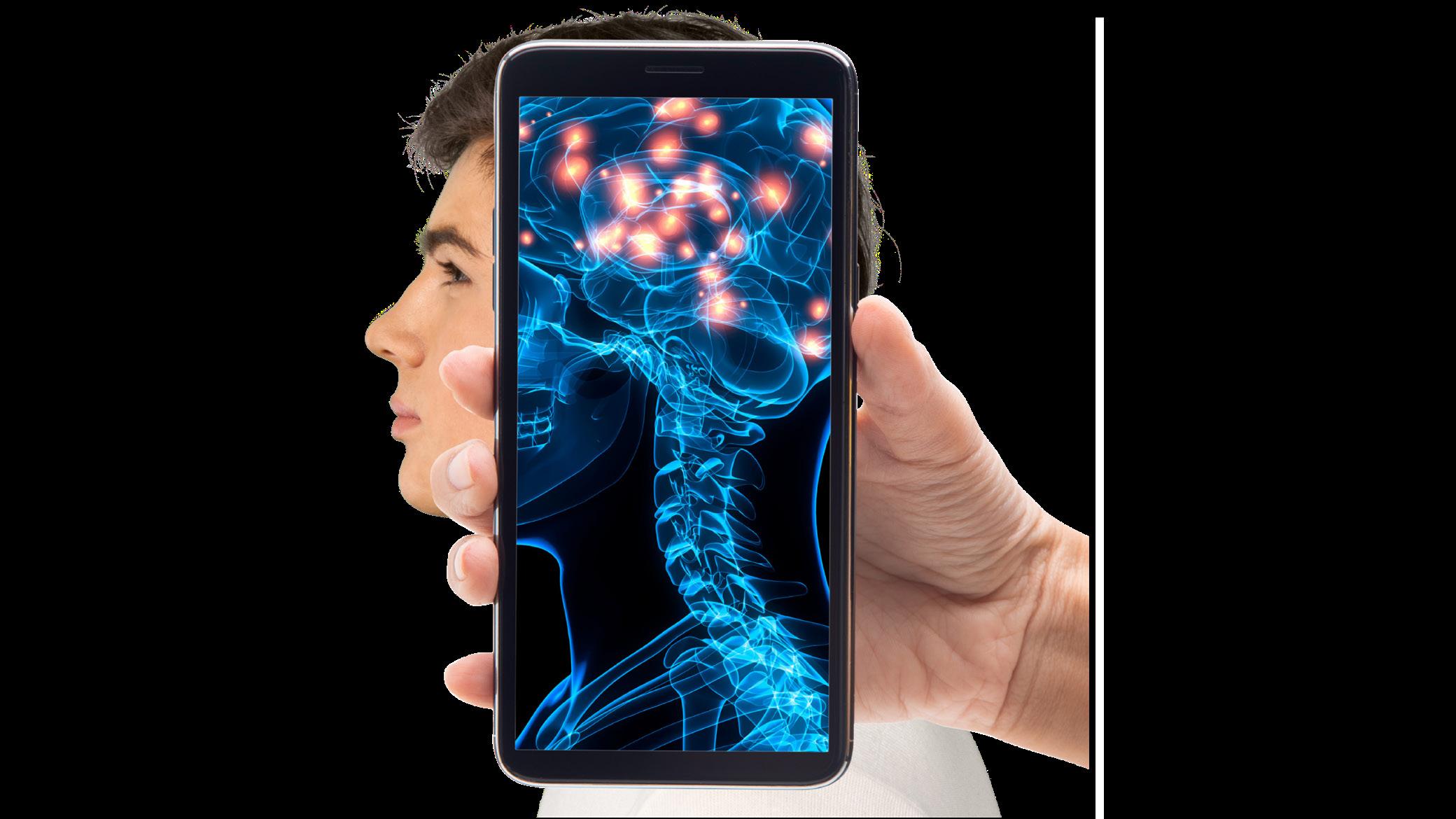

TopDoctor Magazine explores future technologies that can drive revenue to your clinic and improve patient experience. We want to share them with you Scan the link below to explore the future of medicine. SCAN HEREhttps://t2m.io/aj3za2Ay YOU NEED TO KNOW THIS!
Compassion inplastic surgery
An Interview with Dr. Brian Pinsky, MD, FACS
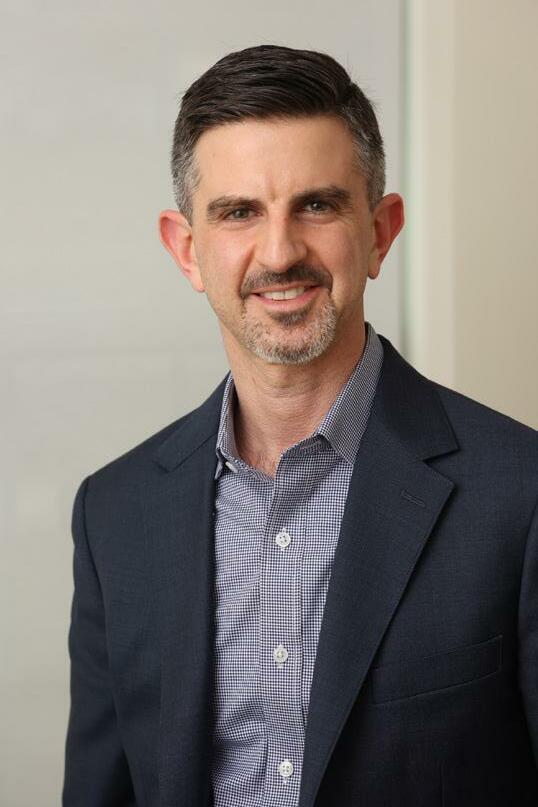 WORDS BY GAYE NEWTON
WORDS BY GAYE NEWTON
Dr. Brian A. Pinsky, MD, FACS, is con sidered one of the most recognized plastic surgeons in Long Island, New York. He has earned several awards since 2017, including the Castle Connolly Top Doctors and the Rising Stars award.
But as important as this recognition is, his focus on and compassion toward his patients' needs have formed a philosophy that guides him toward success.
A DOCTOR IN THE MAKING AND ON THE MOVE
For the past 10 years, Dr. Pinsky has practiced at the Long Island Plastic Surgical Group serving the New York City area. He was recently named the Chief of Hand Surgery at Nassau University Medical Center, the culmination of a journey along a career path that crisscrossed the country.
Originally from Akron, Ohio, Dr. Pinsky earned his undergraduate degree at the University of Pennsylvania. After receiving a post-baccalaureate certificate at Boston University, he was accepted into Case Western Reserve University in Cleveland, Ohio.
"My father was an orthopedic surgeon, and I was leaning in that direction," Dr. Pinsky shared.
During medical school, one of the electives during his rotations was in plastic surgery, about which, at the time, he knew very little.
"It was a mind-blowing experience! The first day I got there, they were doing a microvascular free flap," Dr. Pinsky said.
For a microvascular free flap, a reconstructive surgeon transfers a piece of skin, tissue or bone from one area of the body and attaches it to an injured area. They then connect microscopic blood vessels with sutures.
"At the time, I didn't know that type of surgery even existed," Dr. Pinsky explained. "They let me sit there and watch the whole case, which was great. Those were the best two weeks of my entire medical school. I learned more about the specialty and the scope of practice, and I realized that I could do hand
54
had some exposure to it during his residency, it wasn't enough.
"I wanted to get certified. It's one of the subspecialties that requires fellowship training to be taken seriously in the field," Dr. Pinsky said.
He matched into a fellowship in hand and microsurgery at UCLA, so he spent a year in Los Angeles.
"UCLA was awesome. There are wonderful surgeons there, and it was a great experience," Dr. Pinsky shared. He returned to New York and joined the Long Island Plastic Surgical Group. And this is when he settled with his wife and family.

FINDING A MENTOR
Dr. Pinsky sought out a well-known plastic surgeon in
"I went to his office and introduced myself," he said. "He set up a meeting and was very welcoming. He allowed me to spend some time in his office and operating room. I did some research with him, which helped open some doors for me."
Dr. Bahman Guyuron is well respected internationally as an innovator and teacher in plastic surgery. He has developed techniques that improve the safety and effectiveness of surgery and treatments, while his publications and presentations have educated many in the field. As a result, numerous experts and patients consider him the best doctor in the country.
"I have also been very fortunate to work closely with other inspiring surgeons and educators, such as Dr. Prosper Benhaim at UCLA and my senior partner, Dr. Roger Simpson," Dr. Pinsky shared.
THE MEDICAL PRACTICE: A DUAL FOCUS
"I have a very varied practice," Dr. Pinsky said. "I would
Cleveland, Ohio, Dr. Bahman Guyuron, hoping to learn
Top Doctor Magazine / Issue 143 / 55
DR. PINSKY
say about half of my practice is hand and peripheral nerve surgery, and the other half encompasses all of the rest of plastic surgery. I do a good amount of cosmetic surgery, with more and more of it these days."
'All of the rest' for Dr. Pinsky includes breast and cancer reconstruction plus abdominoplasty, rhinoplasty, breast augmentation and lift, carpal tunnel, arthritis and nerve repair. He combines cosmetic, reconstructive and hand surgeries.
"I've been doing some very interesting things recently with amputee care. For example, there's a relatively new technique called targeted muscle reinnervation. It's a way to handle patients with nerve pain after amputations," he explained.
The innovative surgical procedure, targeted muscle reinnervation (TMR), reassigns the nerves of the arm and the hand, allowing patients with upper-arm amputations to control their prosthetic arms with just thought.
A PATIENT'S STORY
Dr. Pinsky recalled working with an amputee patient and how that patient changed his perspective on success.
"A gentleman had a traumatic amputation from a motorcycle accident about 10 years ago," he shared. "He was living in chronic pain and was on chronic, high-
dose opioid medications. He couldn't wear a prosthesis because of the quality of his amputation stump. So, I revised his amputation by shortening it to get better sub-tissue coverage. Then I rerouted the nerves using the TMR technique."
Dr. Pinsky is happy to share that this man is now completely off pain medication and is a totally different person.
"That's one for the books for me," he said.
HELPING WEIGHT LOSS PATIENTS REALIZE THEIR GOALS
Dr. Pinsky has a special interest in body contouring and reconstruction following weight loss. Many patients who have struggled with weight throughout their lives will ultimately find success from diet and exercise or even weight loss surgery. However, extreme weight loss will often leave patients with loose, hanging skin that can lead to rashes, infections and further issues with self-esteem.
Body contouring after weight loss typically involves a combination of skin excision and liposuction to achieve the desired result.
"Every patient has a unique appearance after weight loss, and it's critical to tailor your surgical plan to meet the needs of each patient," Dr. Pinsky explained.
“
I have a very varied practice. That's the best part for me. I really like to do it all and do it at the highest level.
56
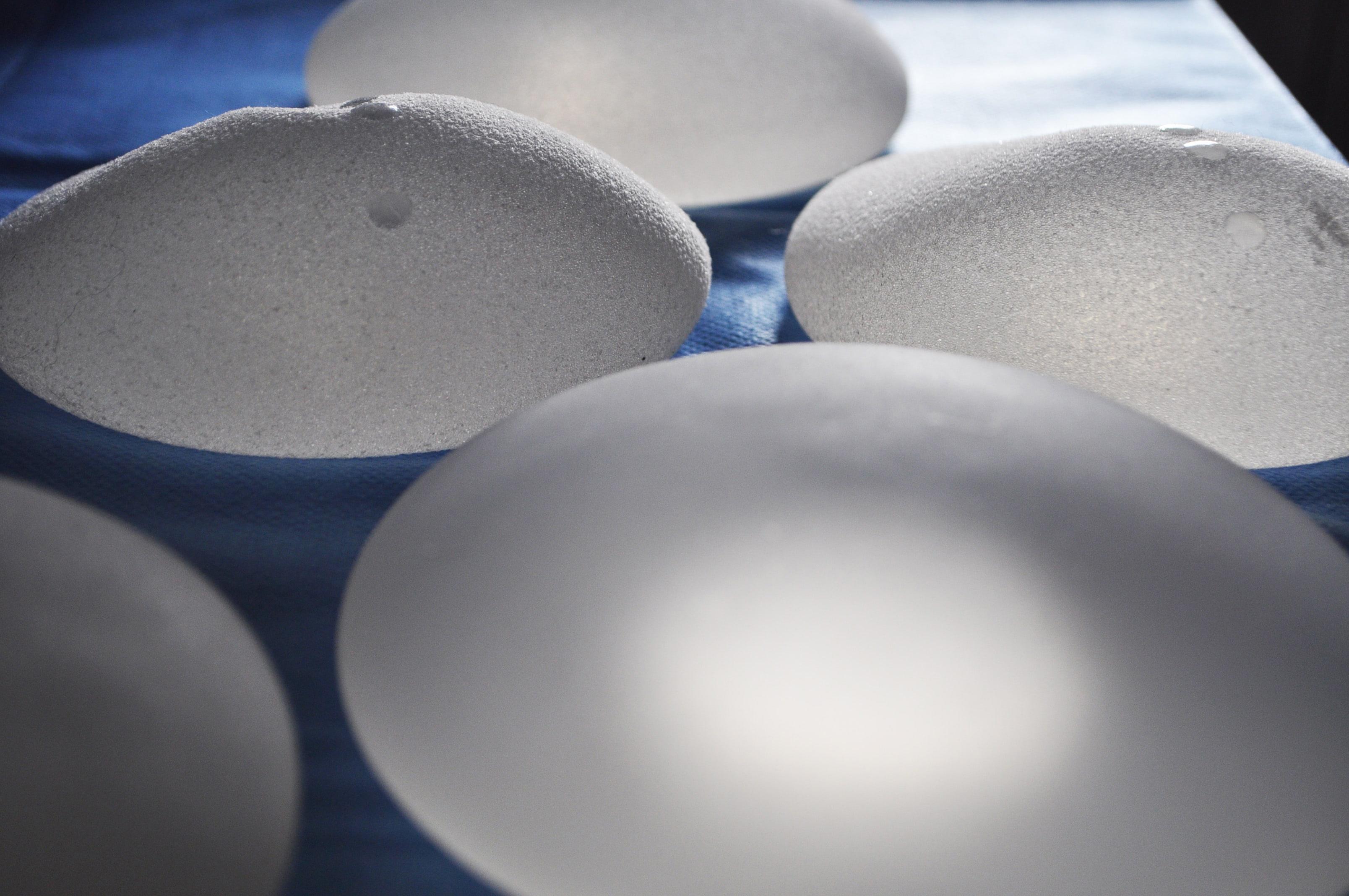
Top Doctor Magazine / Issue 143 / 57
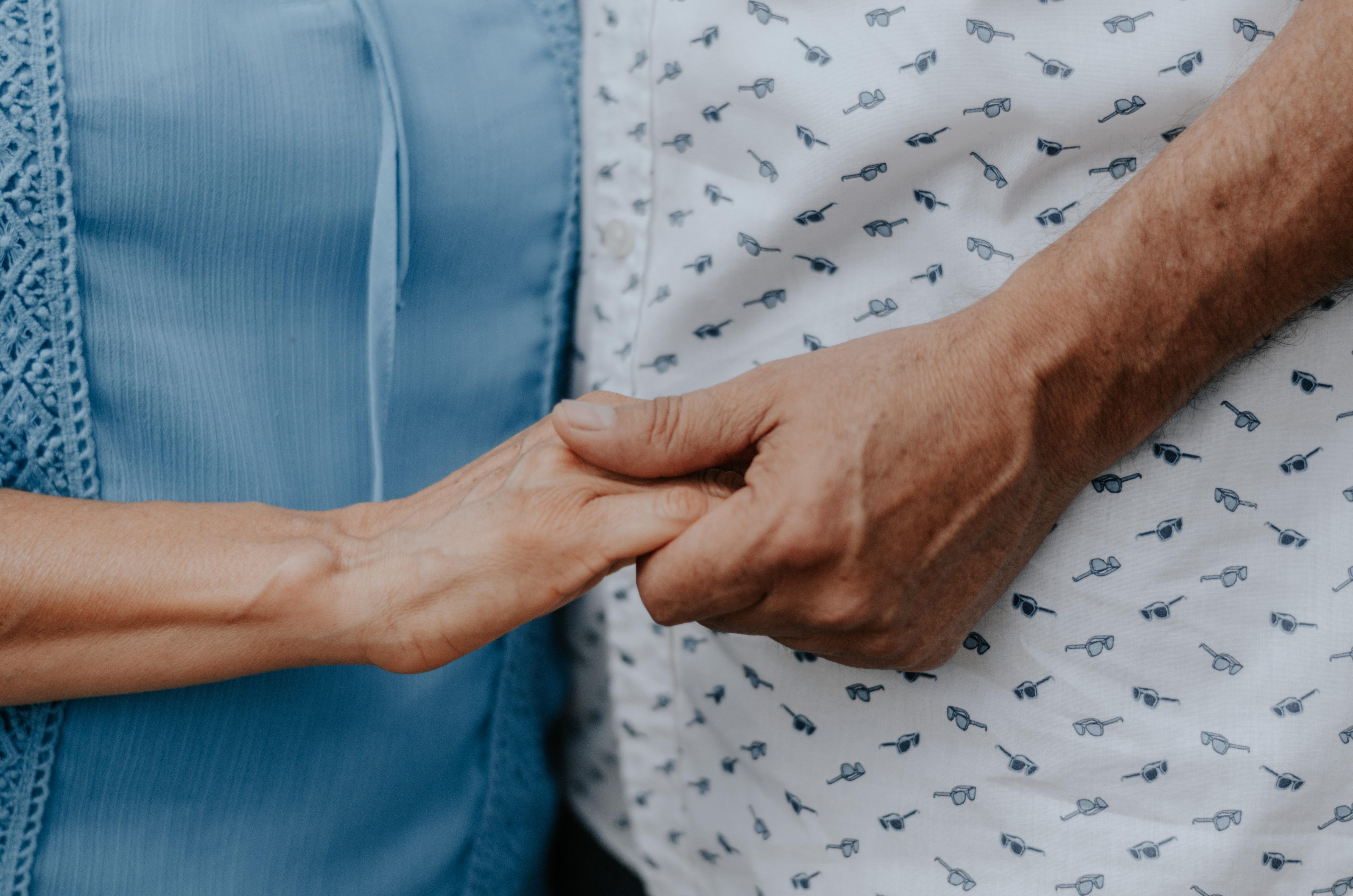
58
GETTING INVOLVED
Dr. Pinsky shares his knowledge and expertise through participating in a variety of organizations. As an educator, he is the Site Director of the NUMC/Stony Brook Plastic Surgery Residency Program. Dr. Pinsky is also active with the American Society of Plastic Surgeons, the American Society for Surgery of the Hand and the Nassau County Medical Society. He has published in peer-reviewed journals and serves as a consultant reviewer for the Journal of Hand Surgery and the journal HAND.
A PHILOSOPHY FOR
"I have a very varied practice. That's the best part for me. I really like to do it all and do it at the highest
He realized that choosing to undergo elective surgery leaves a patient vulnerable, so, as stated on his website, "your surgeon should be approachable, dedicated to providing a private and comfortable space to discuss your concerns." Every patient should have a positive experience.
"Tailor your approach to every

Top Doctor Magazine / Issue 143 / 59
IS SUCH A THING AS HAVING Much Sex?
Romantic life is a healthy, fun and intimate part of any relationship and one of the best possible boosts to your emotional, mental and physical health. But is it possible to have too much sex? This is an important question that deserves to be addressed in terms of physical health, emotional maturity and mental wellbeing. So, what does the research say when it comes to having 'too much sex?
 WRITTEN BY NATHAN PIPKIN
WRITTEN BY NATHAN PIPKIN
THERE
Too
60

Top Doctor Magazine / Issue 143 / 61
Is It Even Possible to Have Too Much Sex?
It might not be a simple cut-and-dry answer at first, but the truth is, it depends. As you consider the question of having too much sex in light of your own life, ask yourself what values and uses of your time are most important to you. If you spend an excessive amount of time thinking about sex, you can throw off the balance of your life. If such daydreaming distracts you from work or your ability to engage in your hobbies, you might be dealing with an early sign of sex addiction.
Even if sex addiction is not on the table, you should still consider whether or not you're having too much sex. You don't need to
be experiencing physical health problems for sex to be getting in the way of your highest quality of life. Instead, consider the most important people, organizations and events to you. Is your relationship with sex preventing you from pursuing those opportunities? If so, cutting back on sex and freeing up time and mental energy to invest in your friends, family and hobbies can greatly benefit your emotional health and overall quality of life.
pain during intercourse, urinary tract infections in women and neck pain resulting from too much strain. If the amount of sexual activity doesn't leave time in your schedule to take care of yourself, your problem will only get bigger as time goes on. Additionally, using sex as a coping mechanism to avoid difficult tasks or conversations is a good sign that it's time to slow down and make more responsible choices.
What Can I Do to Help Myself and My Partner?
If these symptoms of excessive sexual intercourse haven't raised any alarm bells, then great! Maintain the frequency that you and your partner find most comfortable, but keep in mind a few tricks for making regular sex pleasant and healthy.
How Can I Tell If I'm Having Too Much Sex?

Several physical indicators help answer this question. Both men and women can develop soreness in the pelvic region as a result of excessive sexual activity. Excessive friction can also lead to skin irritation for both men and women, thus providing an opportunity to ask yourself whether you should take a break.
Other physical indicators that you might be overdoing it include
First, arrange your diet around high-nutrient foods that will increase your sexual desire and boost your mood, such as oranges, grapefruit, almonds, cashews, salmon and kale. In addition to dietary changes, alterations to your exercise habits have the potential to boost your sex drive. Exercise, in general, will improve your cardiovascular health and stamina, but Kegels especially will strengthen the muscles of your pelvic floor and intensify sexual response.
Your emotional intimacy with your partner also plays a vital role in the quality of your sex life. If you and your partner can maintain openness and honesty in your conversations about the sexual dimension of your relationship, you will build a foundation of trust, which is imperative for communicating your needs to each other. If, for example, one of you feels that you have sex too frequently, the trust that you've built will make it easier to work together and find a solution.
62
A Parting Reminder
You owe it to yourself and your partner to assess the place sex has in your lives. If you're experiencing consequences to your physical or mental health, it might be time to hold off. Don't be afraid to have difficult conversations and make an honest assessment of the situation!

Top Doctor Magazine / Issue 143 / 63
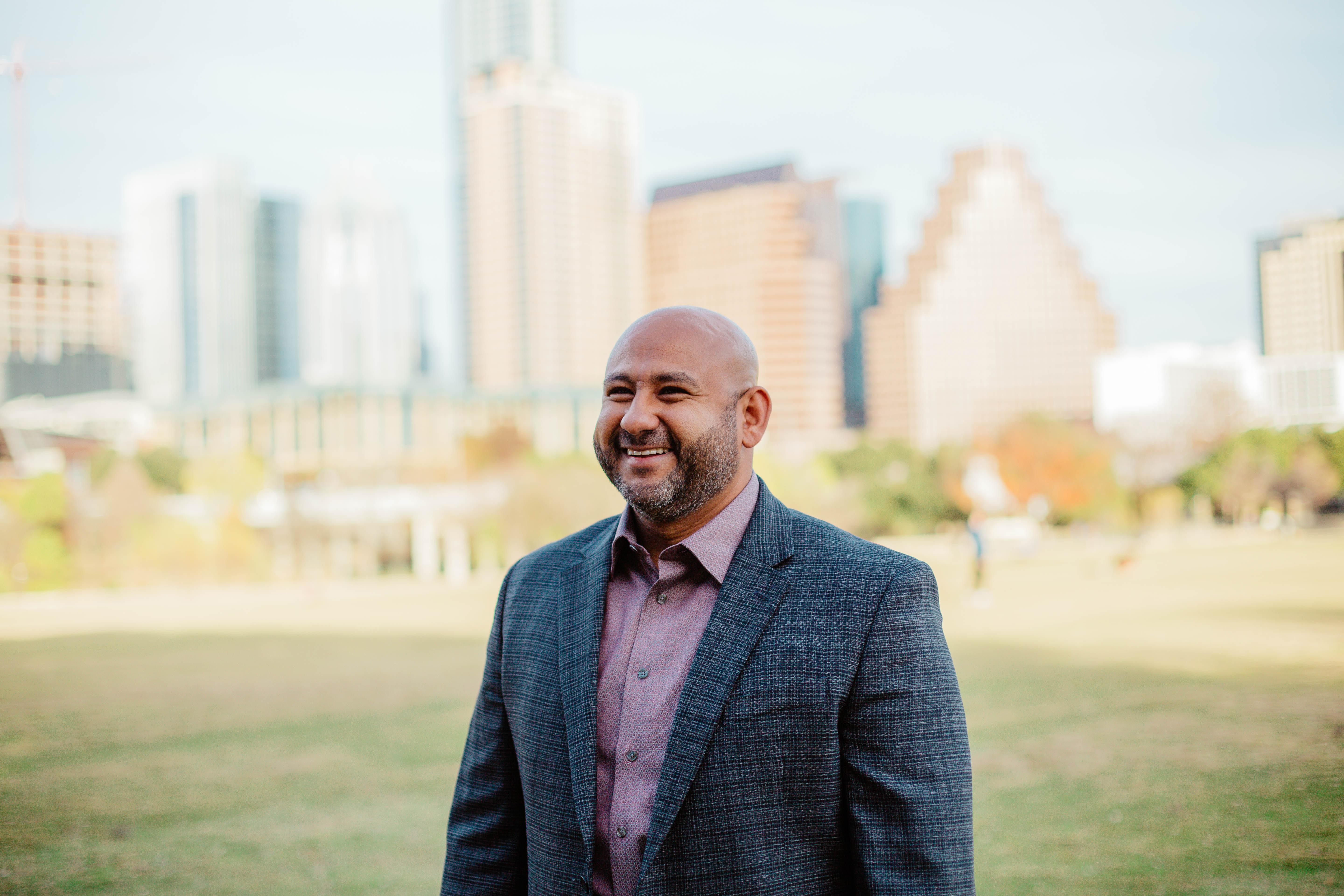
64
The Business of Dentistry
An Interview with Dr. Tarek Aly
WORDS BY GAYE NEWTON
A periodontist with a passion and talent for business development and management, Dr. Tarek Aly transitioned from practicing dentistry to becoming a business owner whose companies support other dentists' businesses. By combining his dental and business expertise, Dr. Aly fulfills his family's dream for him and his vision for himself, all while providing valuable business support for fellow dentists.

Top Doctor Magazine / Issue 143 / 65
DR. TAREK ALY, BDS, MBA, CVA
Dr. Tarek Aly is the co-owner of two businesses: OrthoDent Management LLC and Modern Smiles LLC, both based in Texas. He began his career in dentistry, although his true calling was business.
"I'm from Egypt. When you have Egyptian parents, you know you don't negotiate with them. They wanted me to be a doctor like them and my brother, so I joined dentistry to please them. I fell in love with the dental field after I joined it," he shared.
Dr. Aly received his dental degree from Alexandria University in Egypt, followed by a periodontal residency. He took his board exams at Tufts University in the U.S. and earned an MBA and CVA (Certified Valuation Analyst).
He settled in the U.S. in 2007. That same year, he stopped seeing patients and focused on business that supports the dental field.
"I've always been fascinated by business and how some business disciplines can enhance people's lives. And I've wanted to make the dental industry much more effective, efficient and patient-centric," he explained.
GETTING THE WORD OUT
"I don't practice dentistry anymore, even though I love dentistry," Dr. Aly said. "Instead, I'm focused more on enhancing the practice world and the industry in general. I feel like I can have a lot more impact by doing that."
Dr. Aly has produced and co-produced several written publications and videos, such as the article 'The 6 Steps of Practice Mergers and Acquisitions' and the videos 'Flying, Driving and the Importance of Key Performance Indicators in Your Dental Practice' and 'Accelerate Your Growth with
Associate Alliances: The Science of Systems and a Culture-First Mentality.' He is currently writing a book about enhancing dental groups.
He also enjoys delivering speeches at dental conferences, seminars, webinars and other organizations serving the dental industry.
"Sharing the knowledge with other dental professionals enhances the industry," Dr. Aly explained. "The biggest winner is the patient. It's a win-win scenario for everyone."
THE BUSINESS SIDE
Dr. Aly is using his combined dental and business knowledge to help bridge a gap in many dental practices.
In an interview with DEO Magazine, he observed that dentists do not learn about business, such as marketing, accounting, finance, strategy and operations.
Dr. Aly believes that neglecting the business side of the practice is detrimental. Taking care of business produces less waiting time, happier team members, efficiency and the best quality patient care. Good business ultimately benefits patients.
"The elevated patient care — patient-first and staff-first mentality — looks like affordability for the public. We know that dentistry is expensive. As the economy deteriorates or fluctuates, people are forced to decide: Should I take care of this tooth, or should I pay my rent? So, I think there should be a wide movement of making healthcare and specifically dentistry readily affordable for everyone," he explained.
Dr. Aly pointed out that this is especially important because dental health correlates with overall physical health. Conditions such as heart or kidney disease can be associated with dental problems.
66
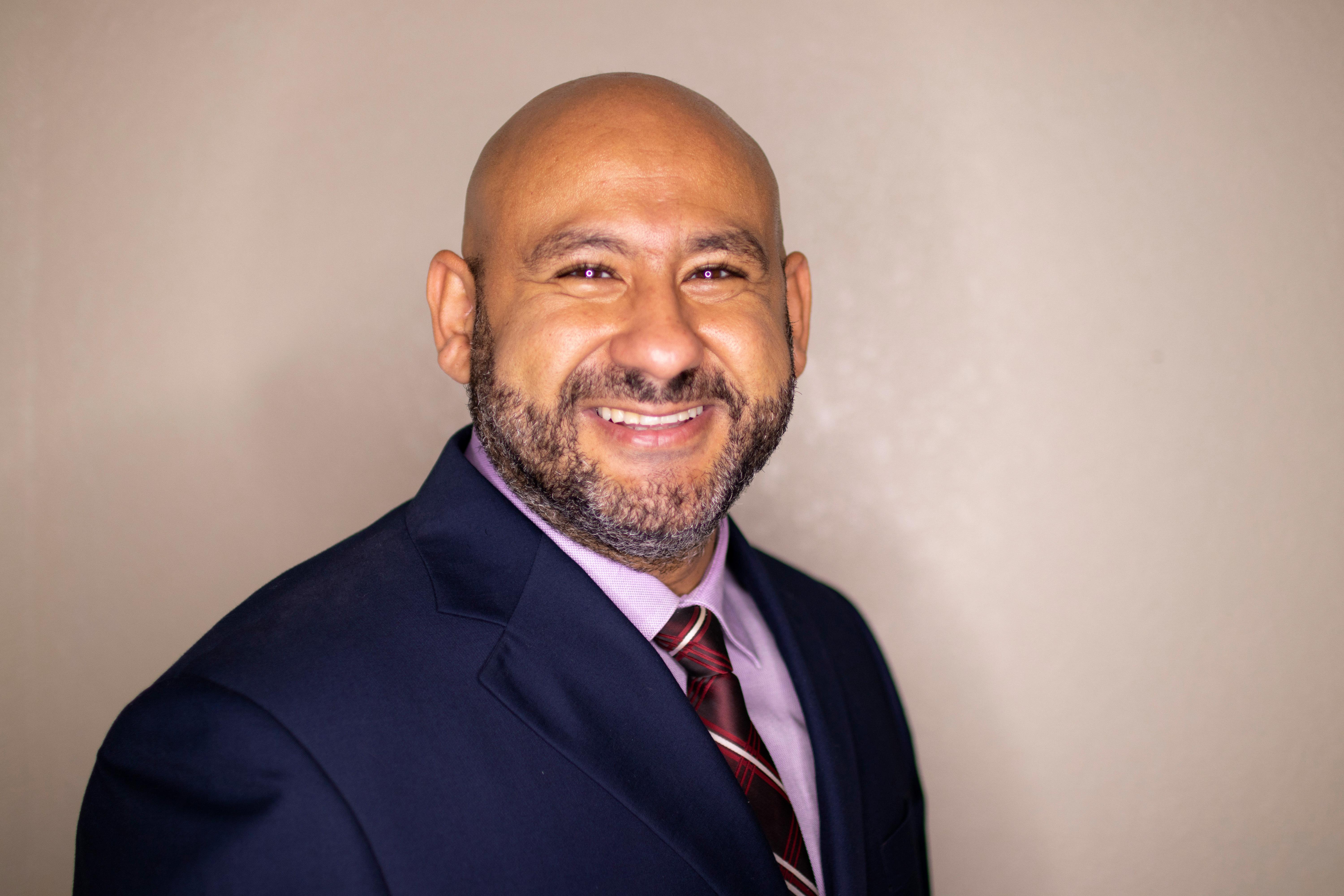
Top Doctor Magazine / Issue 143 / 67
ORTHODENT
Dr. Aly compared the goals of practicing dentistry and those of his current business activity.
"Back then, it was mainly about enhancing clinical care and how to best serve the patients. Now it's how to support the dental offices on a mass scale so that they can help the patients on a bigger scale. So instead of having an impact on 10 to 20 patients a day, I'm now affecting tens of thousands of patients a day," he shared.
OrthoDent is a dental support organization built for dentists by dentists. OrthoDent's team has the dental experience to thoroughly understand what it takes to run a dental office and how to manage it with greater efficiency and effectiveness. Member practices maintain their unique identities and can stay focused on providing high-quality, affordable patient care.
OrthoDent and Dr. Aly's other business, Modern Smiles, comprise 20 locations, with a recent merger netting 82 locations.
THE BEST OF BOTH WORLDS
Dr. Aly envisions a future with increased dependency on automation.
"There is a big movement for automation using
technology, AI machines and software to enhance the quality of patient care," he said. "It minimizes human interaction, which is trending due to COVID-19, there is a labor shortage, and the accuracy in automation is increasing while inaccuracies and costs are decreasing."
But whether patients encounter automation or real people during their visits, the goal is always the same.
"With every patient, you can see in pre- and posttreatment a dramatic difference. They're smiling, more outgoing, wanting to socialize with others. But it's not just the smile that makes the difference. It's a whole behavioral change that family, friends and loved ones notice," he explained.
With the help of OrthoDent, dentists can put in place sound business practices and attain a higher level of efficiency, producing benefits that dentists can pass on to their patients, such as less waiting time, lower costs and an overall positive experience.

Also, with sound business practices and the efficiency this affords, dentists have a better chance of making dentistry readily affordable for everyone.
"It doesn't have to be expensive for it to be highquality care of the health of the patients," Dr. Aly concluded.
Dentists with both the best techniques and business practices will give patients the greatest chance at the best possible experience and outcomes.
68

“It doesn't have to be expensive for it to be high-quality care of the health of the patients.”
Top Doctor Magazine / Issue 143 / 69


